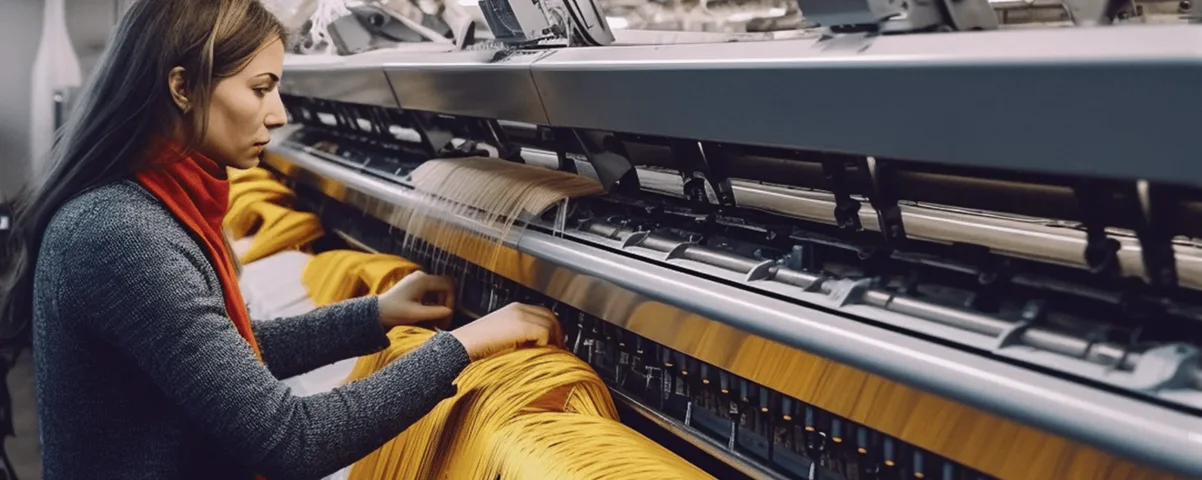10 ways to speed up your fashion manufacturing process
Introduction
Speed is key in fashion: fast stock turnover, fast delivery, and fast production. The average length of the fashion cycle is constantly being reduced, with consumers becoming more demanding and retailers more impatient.
The most recent craze for shoppers – fast fashion – has served as a catalyst to make the fashion cycle even shorter. Fast fashion means that whatever we’re wearing today has been picked from an infinitely growing catalog of trendy products. It has been manufactured and shipped to our doors within weeks of being spotted on the runway (or celebrities, or Instagram, or anywhere else).
Whether this faster pace is being forced by consumers or just an inevitable evolution in consumption patterns, the reality remains that garment manufacturers need to speed up their manufacturing process to stay ahead of their competition. But, how can you speed up garment manufacturing without sacrificing the quality of garments? To keep up with this race against time, manufacturing processes have to constantly be updated with new technologies, automation, and analytics.
This can be achieved in numerous ways including improving the quality of the sew and cut processes, utilizing fabrics which are easier to work with, and increasing efficiency by using robotics and artificial intelligence. Speed will only continue to become more important as consumers embrace faster and even instantaneous gratification.
Strategies to Enhance Speed and Efficiency in Garment Manufacturing
Are you ready to press to the max every hour of every day? Here are 10 ways for manufacturers to speed up and boost efficiency in their garment production process
1. Create an efficient production schedule
Determine the proper sequence of operations for each garment style. Integrate all steps of your manufacturing process into a streamlined flow so that nothing is repeated, and everything is done in as few steps as possible. Make sure you have enough time to make any necessary alterations to get it all done in time for shipping.
2. Optimize your floor plan
Reduce movement on the factory floor for optimal task efficiency. Organizing equipment, tools, and materials properly will not only improve manufacturing productivity but will also help to keep the workplace a safe environment for employees to do their jobs. Make sure your sample room is well organized. Use a dedicated warehouse for incoming materials and outgoing finished goods.
3. Commit to scheduled maintenance
The fastest way to slow things down is by ignoring regular maintenance. Downtime for maintenance costs much less than downtime due to broken and worn equipment. With new technologies, it’s easy to keep track of your maintenance schedule. There are many smart machines and systems to help you track every machine’s performance.
4. Use the latest software tools
Invest in software that helps with capacity planning, scheduling, customer relationship management, inventory and order tracking, data collection and analysis. Automation is a powerful tool for increasing efficiency and reducing errors. Your factory staff should not be wasting time on email updates and manual progress reports. New software solutions like the WFX ERP and Smart Factory can help with real-time alerts, scheduling, inventory, and monitoring workflow.
5. Active collaboration is key
Improve communication between departments so everyone is aware of what is happening at each stage of the production process. In garment manufacturing, each stage requires the input and approval of different people in different departments. The more coordinated they are, the smoother things will run. Instead of manual approvals, invest in software tools that allow line supervisors to be more proactive. Communication must be crystal clear so everyone knows exactly what to do on what day and the next.
6. Use data to get better
Factories can and should collect data using IoT sensors and web-based monitoring devices. This data can be used to optimize the manufacturing process by reducing defects and increasing productivity by predicting machine failure beforehand. You should also set aside time for failure analysis and improvement planning. Identify where product-line rationalization can help, and use benchmarking and analytics tools to see how your performance compares with others in your sector.
7. Provide performance training
Training at factories should be based on the real-life needs and challenges individual workers face, rather than a tick-box exercise. Schedule training sessions for operators when new equipment is installed. Keep accurate records of training and schedule refresher if needed. Create ‘learning moments’ tailored to the practical requirements of staff on the shop floor.
8. Keep alternate shipping options
Don’t let your production get delayed due to shipping problems. Have a network of multiple carriers. So that if one shipping company experiences issues or is too busy, you have more options to fall back on. It’s also wise to choose a carrier who will work with you regardless of changes in schedule because these situations can be hard to avoid.
9. Outsource or automate
When it comes to garment production, the more automated your system is, the quicker you can get garments out of your factory. That’s why it’s so important to increase automation whenever possible. Automation can also help reduce production costs and improve product quality. Another strategy you can use is outsourcing, especially during peak season when demand temporarily rises. They may be able to help with any temporary rise in demand but won’t require training or long-term commitment from your company.
10. Maintain a material stock
Invest in building a good inventory of fabric stocks, popular trims, hardware and other materials. This will help cut down on lead times for these items by reducing the need to place new purchase orders every time production begins for a new style. Work closely with suppliers who are willing to make quick deliveries if you order small quantities, but also offer discounts for larger volumes of raw materials like zippers or buttons. If you place repeat orders with suppliers who have longer lead times, consider asking them if they can deliver sample quantities ahead of time so that you can begin production faster.
Conclusion
If all else fails, you can hire a consultant to come in and do a professional evaluation of your process and make experienced suggestions for improvements. A good consultant can also help you find out where there may be weaknesses in the system that are causing problems.
To learn more about how you can use technology to speed up your fashion manufacturing process, speak to one of WFX’s expert ERP consultants for free!
Customized software solutions can help by eliminating redundancies across various departments and offer real-time information on all aspects of production. With comprehensive visibility into operations, you’ll find it easier to reduce lead times and increase efficiency.
You might just be surprised by how an effective software implementation can reduce costs, enable you to meet deadlines, and improve productivity in the garment industry.






